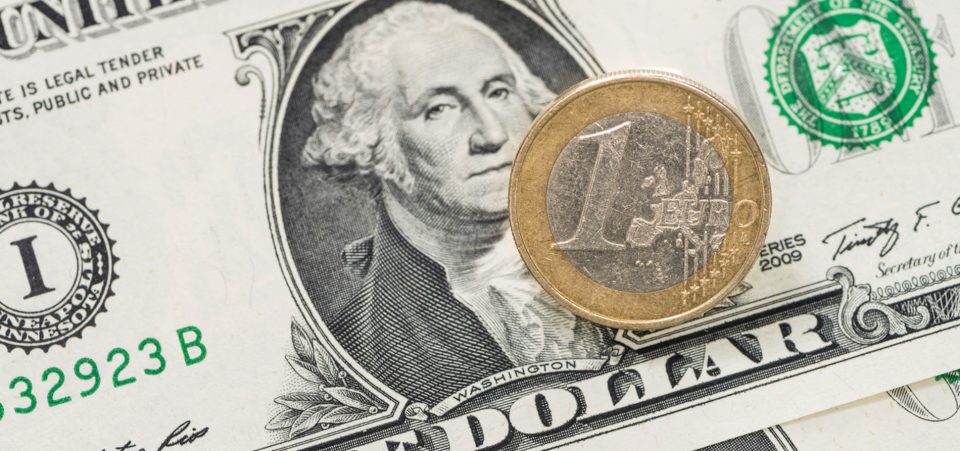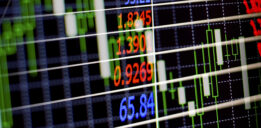Euro to Dollar Outlook Has to Contend with Almost Irreversible Anti-EU Sentiment
Will 2017 be the year of the euro’s demise? Could it mark the beginning of the end for the entire European Union (EU) project?
Had anyone predicted the end of the EU in the mid-1990s, being laughed at would have been the least he/she could have expected. Times have changed; the euro to dollar outlook for 2017 is dire in the most optimistic of cases.
The storm clouds are gathering over the European continent. The biggest clouds distressing the euro to dollar outlook are reaching France. They could unleash a veritable flood of destruction, as presidential candidate Marine Le Pen has an ever stronger chance of winning. She is running on a strongly isolationist rhetoric, and the first of the two rounds of the election is April 23.
Frankly, the EUR to USD outlook worsened when Donald Trump won the American presidential elections last November. He made it clear that nobody can discount the strength of the anti-globalization message. Trump showed that polls aren’t reliable. Translating those factors to the EU suggests that the risk factors for the euro have never been greater.
The EUR to USD exchange rate has held up around 1.07 for the past few weeks. But that rate has held up due to “teething” issues with the Trump White House. The new president is discovering the limits of his powers. Still, the euro weaknesses will become ever more evident over the next few months. The euro to dollar outlook does at least have parity in its sights.
Trump’s win and Brexit have injected strength into the eurosceptic and protectionist trend within the EU. But France is the heart of Europe. Without it, there is European continental disintegration. But it’s neither the first nor the last cannonball from which the euro must protect itself in 2017.
The prospect of Marine Le Pen winning the French presidential elections has become ever more realistic. She is the leading candidate, and Trump has taught us to expect anything. Thus, the financial markets and investors who bet on sovereign debt securities, in particular, are on alert.
The spread between French and German “Bund,” an indicator of economic stability in the eurozone, has hit the highest levels since 2014. This is no small matter, considering that France is the second-largest economy of the eurozone. The rising spread, which has affected other EU member states as well, reflects concerns that Le Pen has more than a shot at winning.
Her National Front party promises to hold a referendum over France’s membership in the eurozone: a “Frexit.” Thus, neither voters nor investors can ignore the looming shadow of Frexit. If you’re still not convinced that the euro to dollar outlook is ominous, look to the Netherlands for a reality check.
It’s Not Just France: Euroscepticism Has Spread
The Netherlands, a small country, is one of the founders of the EU. By most standards, the Dutch are among those who have benefited most from the euro, other than the Germans. The French go to the polls in late April, but the Dutch will vote next month. As in France, there is an anti-euro, anti-Islamic, and anti-immigrant party that promises to hold a sovereignty referendum: a “Nexit.” Germany will also go to vote. It, too, is not immune to populist pressures, but more on that later.
The litmus test is the Netherlands, where the Freedom Party (PVV), led by Geert Wilders, can count on at least 12% of the vote. That doesn’t look like much in the de-facto bi-partisan system of the United States. But, in the highly proportional system favored by the Netherlands, any party that accounts for 12% of the electorate has a role in forming the government.
Wilders, who in his country has been accused—and has faced legal allegations— of spreading Islamophobia, intends to launch Nexit procedures. Wilders’ electoral performance, in the current security climate that prevails in Europe—fear—could be much better than his most optimistic expectations.
That will bolster Le Pen and the chances of Frexit. France has been there before. As far back as 2001, Marine Le Pen’s father, Jean-Marie Le Pen, enjoyed strong support. Yet he had to fight the combined efforts of the mainstream parties, newspapers, institutions, and even the church.
They unleashed a campaign of denigration against Le Pen, presenting him as “dangerous.” The denigration campaign was such that socialists ended up voting for the center-right candidate Jacques Chirac, representing the party that was their sworn enemy. Now, in 2017, Le Pen’s daughter has faced the same combination of obstacles as her father.
But she has much more popular momentum than her father ever did. She will face strong competition in the second round, in another Chirac-2002 situation. But the world is different. Mainstream media has a challenger with the glut of social-media outlets and alternative news outlets that have resonated with more voters.
Le Pen will face the combined voters of the traditional right and left, but that will make her voice inevitably louder within the French and European political establishments. It will only add impetus to the Frexit arguments, raising questions about the euro and the nature of the EU.
Until recently, it seemed that the French centrists might yet save the euro. François Fillon, of The Republicans, would have managed to coalesce a sufficiently strong backing to defeat Le Pen. His presence on the ballot could have reversed the bearish EUR to USD forecast. But a family scandal has weakened his political chances. The scandal may even end up pushing him out of the race to the Élysée Palace altogether.
Next Stop: Germany
The anti-euro momentum will spill from the Netherlands to France, and then Germany. In the fall of 2017, Germans will hold their federal election. Yet—as odd as it may seem—since Germany has benefited from the euro, anti-European sentiment has also increased.
Centrist Angela Merkel will face off the Social Democrat Martin Schulz and the right-of-center Alternative für Deutschland (AFD), led by Frauke Petry. From Germany, the momentum will reach other European countries. There are eurosceptic parties (of different ideological orientations) already in the government.
Greece, Hungary, Poland, and Finland, for starters. In some countries, the populist and eurosceptic parties have almost 50% popularity. In Italy, such parties can count on close to 30% of the vote, on average. Italy could also be heading to the polls in 2017. The anti-euro populists are gathering strength there because few EU members have seen their economies decline under the euro than Italy. In 2000, before the euro currency was adopted, Italy and Germany had similar, and low, unemployment rates. Italy was catching up fast to Germany in industrial output and export value.
After the euro, Italy faces double-digit unemployment with few solutions to resolve it. There’s no doubt the eurosceptics have a fighting chance in the next electoral round. All anti-European candidates, starting with Wilders in the Netherlands and Le Pen in France, advocate protectionism and the return of monetary sovereignty.
The euro might still survive the thick forest of parties all over the EU that want to destroy it. But the stakes on the line will lend the single currency to suffer major speculative efforts. The EUR to USD outlook has never looked more in favor of the dollar in recent years.
What a Difference 25 Years Make
Almost exactly 25 years ago, on February 7, 1992, the Maastricht Treaty transformed the European Economic Community into the EU. It laid the foundations for the single currency. But the world was much different than today. The world was still high on the optimism that came after the fall of the Berlin Wall.
In 1991, in one of the most gratuitous expressions of Western hubris, the American political scientist Francis Fukuyama published his famous essay, proclaiming the “End of History.” By this, Fukuyama noted that the free market model would triumph everywhere.
But then hope eroded; now it has all but ended. First came the wave of G7, G8, and G20 protests against globalization. This was already in full swing by the time of the Genoa G8 summit in 2001. Then came the September 11 attacks. These would awaken the “clash of civilization,” terminating any illusion that “history had ended.”
Then came the Iraq War and the Lehman Brothers collapse with the sub-prime crisis. The world has not yet recovered from the latter. The argument might be made that Trump’s election is the result of the unresolved legacy of these events in the United States. In Europe, that legacy is about to face its biggest test yet.
The Great Recession prompted the mortgage crisis in the United States. But, worse from the global standpoint, it was the springboard for the debt crisis that shook the foundations of the euro. If the euro to dollar forecast 2017 is depressed now, it all goes back to that.
The eurosceptic storm could strike all of Europe in a domino effect. Yet, it will only take one country to pull away to unravel the entire and delicate euro system. The euro has become the symbol, if not the scapegoat, of the economic deterioration of the upper and lower middle classes. They wonder with anger at how the ruling class has grown so much richer.
The euro has betrayed the expectations of Maastricht. Europeans were all but convinced that the single currency would launch them on a more stable and prosperous future. Instead, they have been living a nightmare. Nationalism is back and voters are ready to embrace populist parties and messages, just as American voters embraced Trump.
Germany bears a huge responsibility for the euro’s failure. If Germany reversed course and spent its surplus at home, generating demand from other EU members, it could yet save the euro. But the will to save the euro has weakened.
Insisting on austerity while the eurozone crisis persists, Berlin has contributed decisively to depress aggregate demand, both within its national borders and the eurozone in general. Even as the euro survives, the EUR to USD exchange remains in favor of the dollar. The long recession (or depression) has pushed inflation below the targeted two percent.
The European Central Bank (ECB) has tried to stimulate consumption and growth, but Germany has maintained austerity priorities such that even France has developed a heavy anti-euro sentiment, based more on finance than immigration fears.






